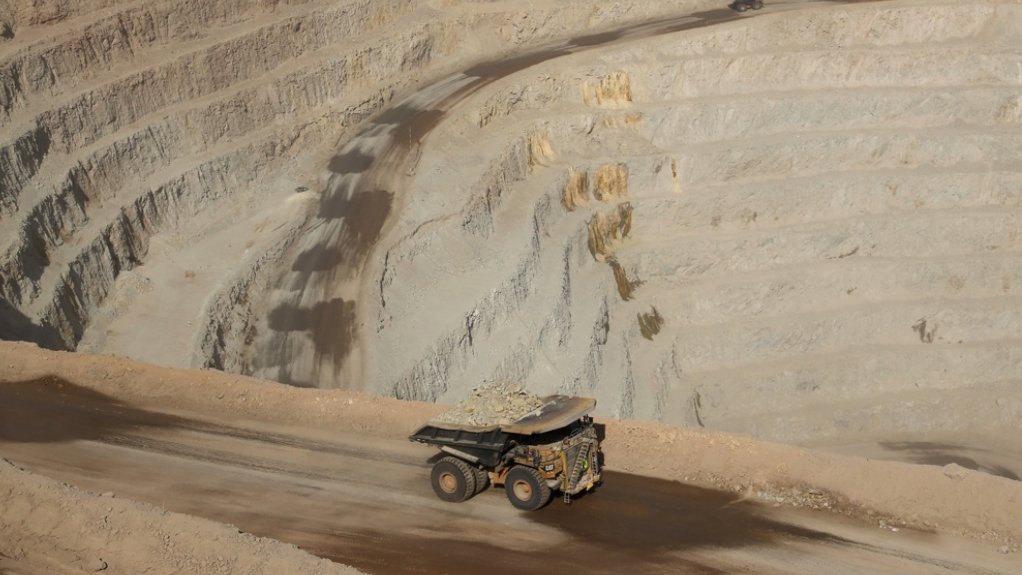Chilean copper miner Antofagasta has approved the construction of its Centinela Second Concentrator project, which will add 170 000 t/y of copper-equivalent to the company's production.
"The Centinela Second Concentrator project is a key element of our profitable growth strategy as it will add a further 170 000 copper-equivalent tonnes a year of production, with first copper expected in 2027, significantly progressing us towards our long-term ambition of 900 000 t of profitable copper production.
"Importantly, it will also reduce net cash costs and unlock significant value in the Centinela district's two-billion-tonne ore reserve. This brownfield expansion project is expected to deliver attractive returns in excess of our cost of capital at a range of commodity prices. We are leveraging more than 20 years of operational experience and understanding of Centinela's ores, utilising existing infrastructure and building on long-established relationships within our local communities," says Antofagasta CEO Iván Arriagada.
Critical path works will begin immediately, with full construction expected to start after definitive project finance documents have been executed in the first quarter of 2024.
The project is estimated to cost $4.4-billion and will include the construction of a new 95 000 t a day concentrator plant incorporating high-pressure grinding rolls to reduce energy consumption; the expansion of the existing raw seawater pumping and transport system; the construction of a new tailings storage facility; investment in the capacity growth in energy and other input supply infrastructure; and the expansion of outbound logistics networks, such as the concentrate transport system and critical port infrastructure.
Antofagasta will also invest in additional loading equipment, autonomous hauling equipment and a truck shop for the mine expansion at Esperanza Sur.
Also included in the project cost are camps and ancillary civil infrastructure, which have been designed to fully integrate into the existing Centinela operation, to avoid any redundancy.
The phasing of the project's capital expenditure is expected to be weighted towards 2025, with similar expenditures in adjacent years.
The project will be financed through a combination of direct funding from Centinela's shareholders Antofagasta and Marubeni Corporation, which will provide about 40% of total funding, and project finance provided by lenders.
Definitive project finance documents are expected to be executed in the first quarter of 2024.
The second concentrator will source ore initially from the recently opened Esperanza Sur pit and later from the Encuentro pit. The sulphide ore in the Encuentro pit lies under the Encuentro Oxides reserves, which are expected to be depleted by 2026.
Fully exposing the sulphide ore in the optimal sequence required to initiate feed to the second concentrator from the Encuentro Pit is expected to require separate investments in infrastructure, mining equipment and mine development activities, which will materially start half-way through the construction phase of the second concentrator and will span a period of three to four years.
The combined investment in mine development and sustaining capital for the expansion of the Encuentro pit is estimated at $1-billion. This expansion in mining activities will further enable Centinela to achieve the development potential of its extensive mineral resource base.
The Centinela second concentrator will produce about 144 000 t/y of copper, 130 000 oz/y of gold and 3 500 t/y of molybdenum.
"We are a company focused on profitable growth and financial discipline, and this project will elevate Centinela to become one of the top 15 copper mines in the world by output and we will become one of the leading gold producers in Chile. At the same time, this project will create significant financial and non-financial value for all stakeholders, while remaining consistent in our approach to disciplined capital allocation.
"Our view on the medium to long-term outlook is that the world is facing a significant shortage of copper, with electrification and the energy transition driving rising demand. The Second Concentrator Project is a clear opportunity to provide additional copper from our existing resource base, using 100% renewable electricity and raw sea water to reduce our environmental footprint, and as a project, represents a demonstration of our purpose of developing mining for a better future," Arriagada says.
Edited by: Creamer Media Reporter
EMAIL THIS ARTICLE SAVE THIS ARTICLE
ARTICLE ENQUIRY
To subscribe email subscriptions@creamermedia.co.za or click here
To advertise email advertising@creamermedia.co.za or click here













